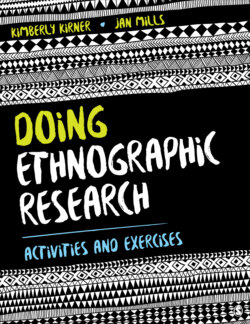Читать книгу Doing Ethnographic Research - Kimberly Kirner - Страница 9
На сайте Литреса книга снята с продажи.
How to Use the Activities in This Workbook For Instructors
ОглавлениеThese workbook activities have been deliberately scaffolded to support learners and help deepen their understanding of the concepts included herein, reaching beyond rote memorization toward reflection and application. Instructors will find that there are many more activities and culminating experiences offered than will easily fit into a quarter or semester class. The workbook, therefore, offers options for instructors to design a course plan that works for their particular students’ needs and interests. The workbook includes everything necessary to deliver the activities, including step-by-step instructions, examples and non-examples, problems, reflection questions, grading rubrics (for the culminating activities), and graphic organizers when needed. Additional problems are available on the instructional website (www.study.sagepub.com/kirner).
All activities have been designed to encourage students to think critically and communicate effectively, with multiple answers possible. Instructors are encouraged to provide feedback in a timely manner in order to optimize students’ learning, which is maximized through the iterative and scaffolded structure of the workbook. The structure of the workbook (with its high degree of scaffolding) has been built specifically to reduce grading time, allowing instructors to pinpoint areas for improvement with greater specificity than is possible with longer, more complicated assignments. Additionally, instructors will find that focusing on the rubrics for the more complex, culminating activities (and requiring students to score their own or a peer’s work using the rubric) will speed grading time and teach students a process of critical self-reflection and editing. Additional instructor support is also provided in Appendix A (Notes for Instructors), which offers alternative deliveries for various activities, as well as on the instructional website.
Finally, while it takes extra time, you will want students to reflect on their own learning process using the workbook’s reflection prompts at the end of each chapter and by selecting prompts from Appendix N (Activity Reflection Questions) for students to reflect on their learning at the end of each activity. Pilot studies showed that this increases students’ awareness of how they learn and builds their learning strategies (which students said improved their performance across their classes). Using the reflection prompts and requiring students to self-assess their culminating activities also provides helpful insights to the instructor into how students see their own efforts (including whether they over- or underestimate their abilities) and decreases grading time for instructors across the course as students became more proficient learners.
